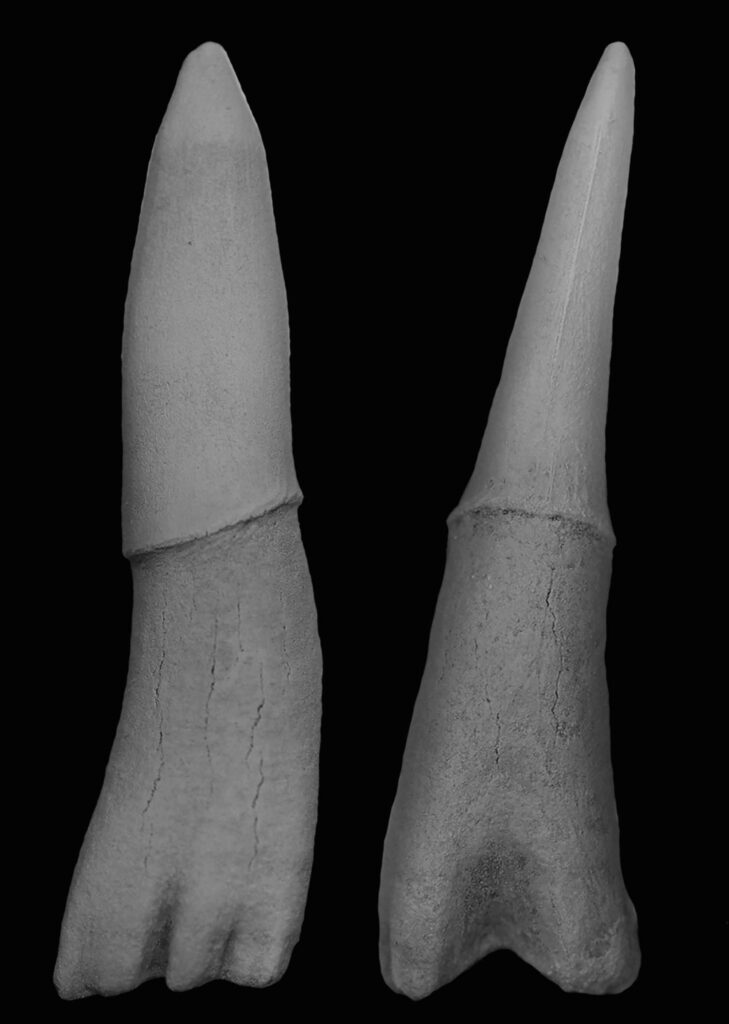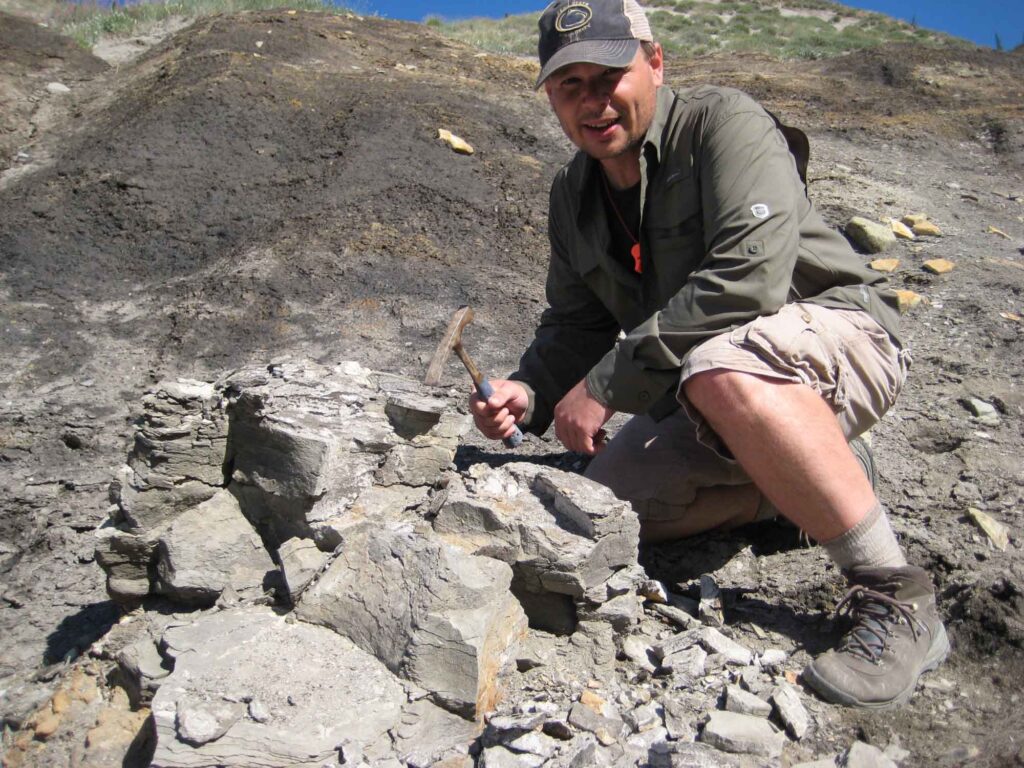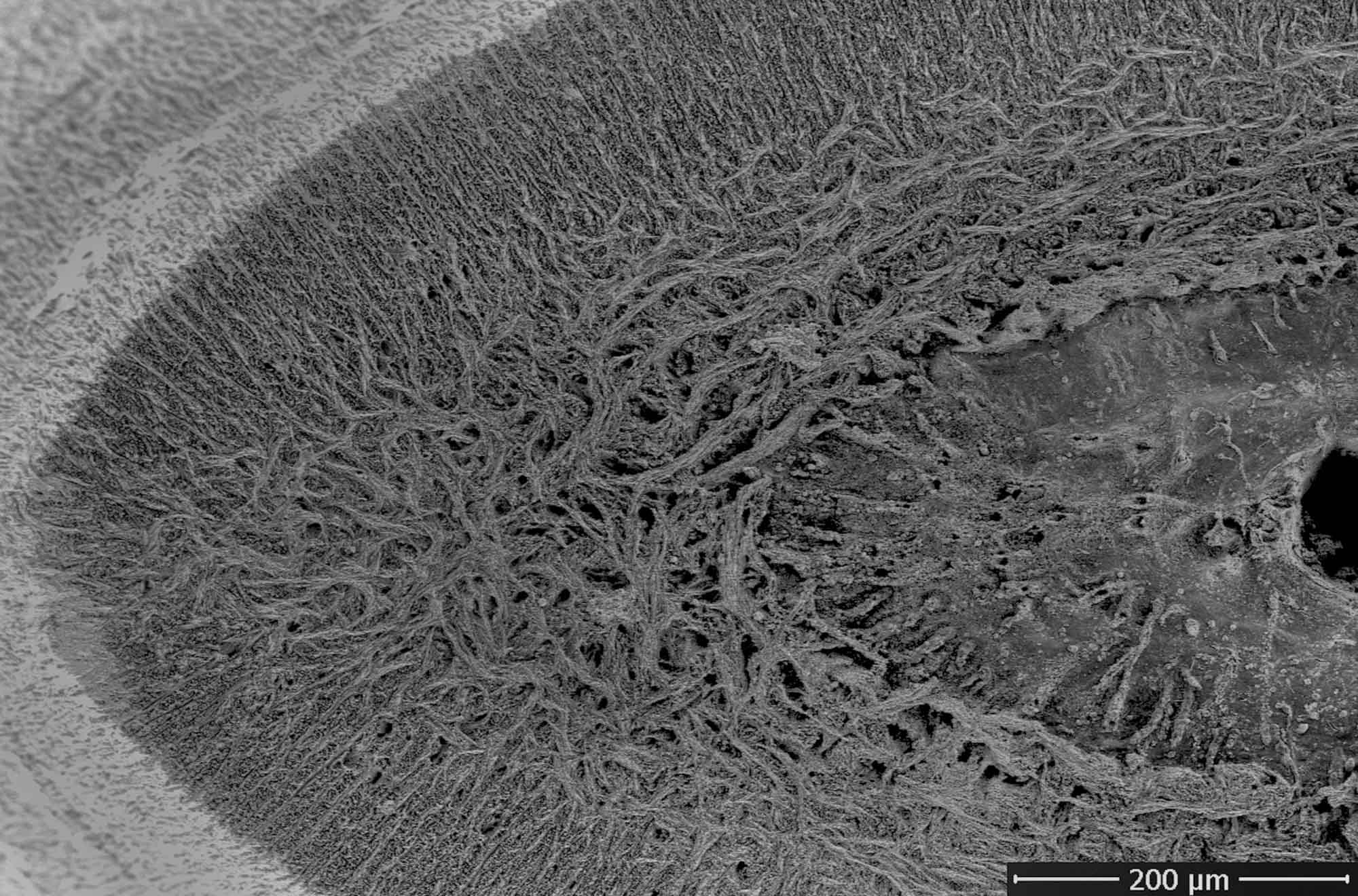Teeth originated in an armoured ray that swam the oceans 100 million years ago, according to new research.
They evolved from jagged spikes along the snout of the primitive sea predator named Ischyrhiza mira.
Known as rostral denticles, they helped the beast forage – and fight off bigger fish. The finding is based on an analysis of fossils.
It backs the ‘outside in’ idea that states scales migrated into the mouths of ancient vertebrates – and became adapted for eating.
The alternative ‘inside out’ theory suggests teeth developed independently within the oral cavity – and ultimately mounting onto jaws.
Lead author Professor Todd Cook, a palaeontologist at Penn State University in the US, explained: “Rostral denticles are believed to be modified scales because of their location on the elongated snout.
“They have an external morphology and developmental pattern that is similar to scales.”

(SWNS/Newsflash)
They are made of an enamel like tissue. Human teeth are composed of multiple layers of hard enamel, dentin and cementum and softer pulp.
Just like with scales, for a new rostral denticle to form an old one must first fall off and make a space available.
Prof Cook said: “Yet, very little was known about the organisation of the tissues that make up rostral denticles, particularly the hard outermost layer known as enameloid.
“Given that rostral denticles are likely specialised body scales, we hypothesized the enameloid of rostral denticles would exhibit a similar structure to the enameloid of body scales, which have simple microcrystal organisation.”
The origins of teeth have been debated for centuries. Prof Cook and colleagues reckon they have settled it – serendipitously.
Ischyrhiza mira had a large mouth and nose – and closely resembled a modern-day sawfish.
It reached up to eight feet long and belonged to an extinct group wiped out by the asteroid strike the killed off the dinosaurs.
Remains have been found all over the world – from the the US, Canada, Mexico to Uzbekistan, Japan, Nigeria and South America.
The researchers were studying the tissue of rostral denticles when Prof Cook noted sawfishes like Ischyrhiza mira belong to the same group as skates and rays – and are closely related to sharks.
They examined specimens that had previously been recovered from a rock formation in New Jersey.
To examine the internal microstructure of the fossil rostral denticles, they sliced the samples across the width and length.
Next, they used a scanning electron microscope to study the histology – or microscopic anatomy.

(SWNS/Newsflash)
Prof Cook said: “Surprisingly, Ischyrhiza mira’s rostral denticle enameloid was anything but simple. I t was considerably more complex than the enameloid of body scales
“In fact, the overall organisation of the enameloid in this ancient sawfish resembled that of modern shark tooth enameloid, which has been well characterised.”
Both Ischyrhiza mira rostral denticles and modern shark teeth have an enameloid covering that largely consists of fluorapatite microcrystals packed together into distinct bundles, he explained.
Towards the outer region of the enameloid, they run parallel to the surface of the tooth and are called the “parallel bundled enameloid.”
Deeper, the they become randomly arranged, a region known as the “tangled bundled enameloid.”
Finally, passing through these layers is the “radial bundled enameloid,” which is composed of packed microcrystals oriented perpendicular to the tooth surface.
In terms of function, having bundles of microcrystals arranged in various orientations enables shark teeth to resist the mechanical stresses associated with feeding.
Prof Cook said: “It is likely the bundled microcrystal arrangement of the enameloid of Ischyrhiza mira’s rostral denticles also served as a way to withstand mechanical forces.”
But the most surprising and important outcome is the study’s contribution to the long-standing mystery regarding the origin of teeth.
Prof Cook added: “This finding provides direct evidence supporting the ‘outside-in’ hypothesis, as it shows scales have the capacity to evolve a complex tooth-like enameloid outside of the mouth.
“It is more parsimonious to suggest scales produced a similar bundled microstructure in teeth and rostral denticles than to conclude that both these structures evolved a similar enameloid independently.”
Sawfish, also known as carpenter sharks, are a family of rays characterised by a long, narrow, flattened rostrum, or nose extension.
They are lined with sharp teeth arranged in a way that resembles a saw. Today, they are among the largest fish with some species reaching lengths of 25 feet. The study is in the Journal of Anatomy.
Story By: Simona Kitanovska, Sub-Editor: Martin M Barillas, Agency: Zenger News
The Ananova page is created by and dedicated to professional, independent freelance journalists. It is a place for us to showcase our work. When our news is sold to our media partners, we will include the link here.




